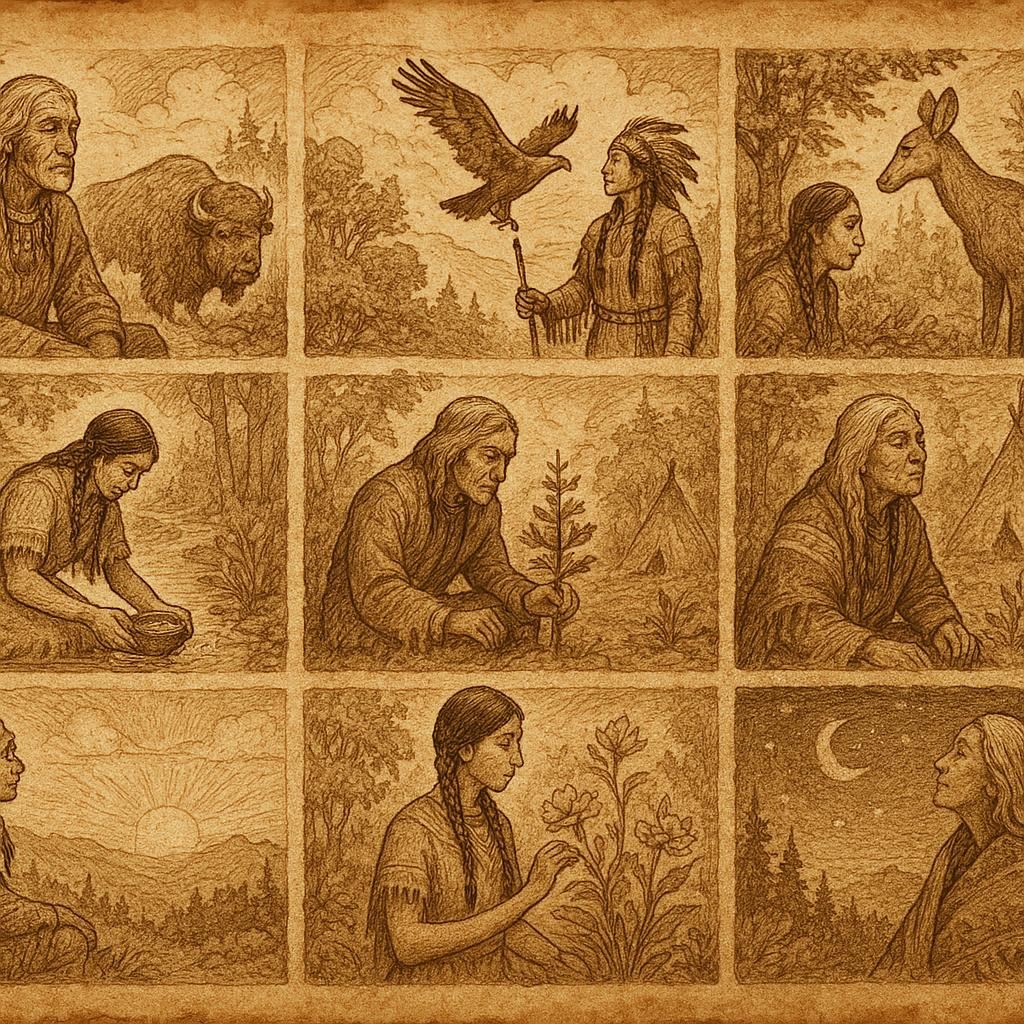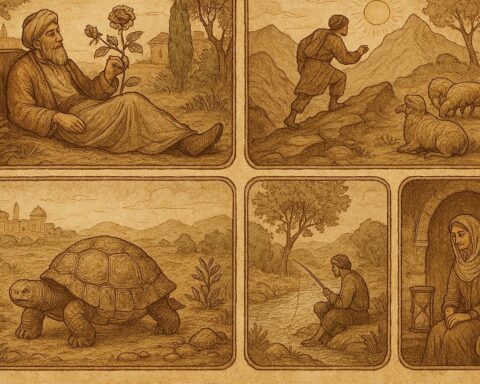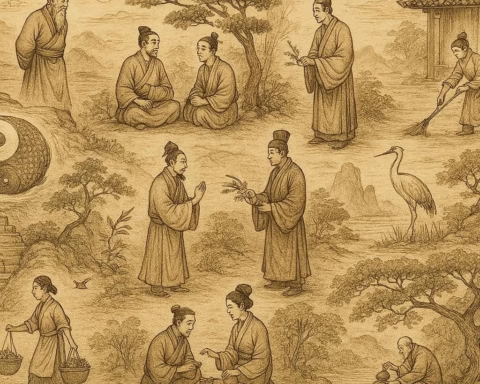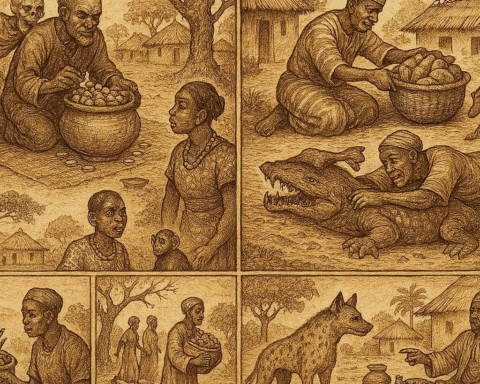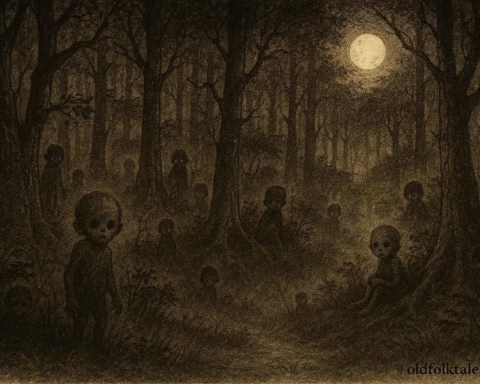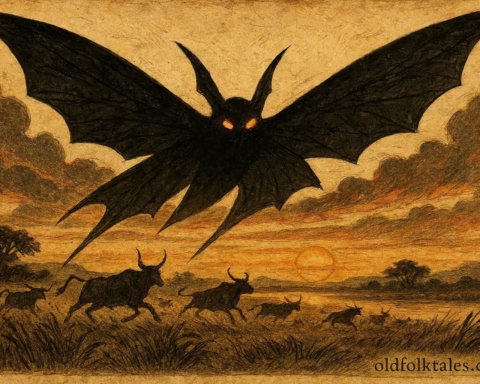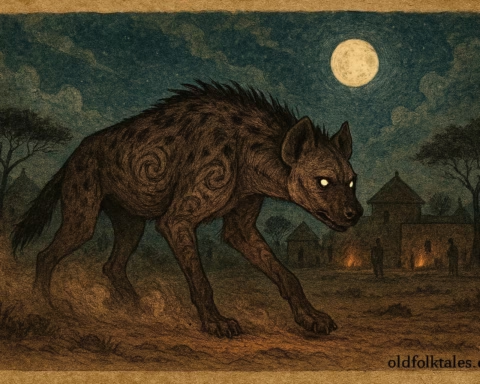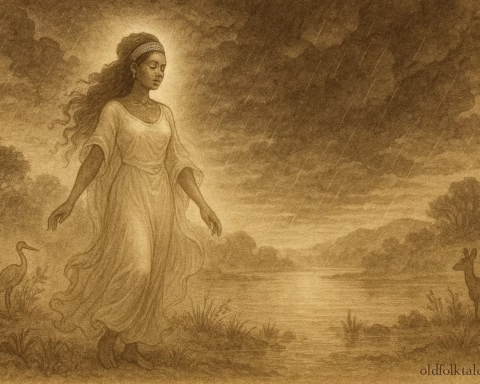For thousands of years before the arrival of Europeans, the Indigenous peoples of North America lived in close communion with the land, water, and sky. Their stories, songs, and proverbs carried more than poetic beauty, they carried instructions for living well. Passed from elder to child around firelight or in the rhythm of a drum, these proverbs distilled centuries of environmental wisdom into a few simple words.
Below are eight Native American proverbs that teach respect for nature, along with their origins and the timeless lessons they hold.
1. “We do not inherit the Earth from our ancestors; we borrow it from our children.”
This proverb frames the Earth not as a possession but as a trust. The land is not an object to own but a living inheritance that must be returned in good condition. The idea forces us to think beyond our lifetime, guiding actions by their impact on future generations.
2. “When the last tree is cut, the last fish eaten, and the last stream poisoned, you will realize you cannot eat money.”
This warning emerged long before industrial pollution became a global crisis. It starkly reminds us that natural resources are the true currency of survival, and no amount of wealth can replace them once they are gone.
3. “Listen to the voice of nature, for it holds treasures for you.”
Here, “listening” means more than hearing, it means observing the behavior of animals, the changes in seasons, the signs in the wind. For the Huron, nature was a teacher offering practical survival knowledge and spiritual truth.
4. “The frog does not drink up the pond in which it lives.”
This humorous yet profound line captures the balance between need and greed. The frog takes from the pond, food, shelter, water, but never so much that the pond is destroyed. Humans, too, must learn this balance.
5. “When we show respect for other living things, they respond with respect for us.”
Among the Arapaho, reciprocity is the root of harmony. Whether it is a tree, a river, or an animal, showing gratitude and restraint invites the land to sustain you in return.
6. “All plants are our brothers and sisters. They talk to us and if we listen, we can hear them.”
This proverb is not metaphorical, it reflects an animistic worldview where all life has spirit. Indigenous healers and hunters listened to nature through prayer, observation, and ceremony to understand its needs.
7. “May your life be like a wildflower, growing freely in the beauty and joy of each day.”
This is a blessing disguised as a metaphor. Wildflowers grow without fear of tomorrow, they simply root, bloom, and turn toward the sun.
8. “Man’s heart away from nature becomes hard.”
The Lakota understood that separation from the land breeds greed, violence, and selfishness. When people return to the open sky, fresh air, and wild earth, they remember humility and interconnection.
Why These Proverbs Still Matter
These proverbs are more than historical artifacts; they are a moral compass for the 21st century. In an age of climate change, deforestation, and vanishing species, their warnings feel prophetic. They remind us that caring for the Earth is not optional, it is the foundation of our survival.
Native American cultures did not see nature as a backdrop but as a living relative. Every stream was a grandmother’s song, every bison a brother’s gift, every mountain a spirit guardian. The relationship was not one of dominance but of kinship. To violate nature was to dishonor one’s family.
From a cultural standpoint, these sayings are threads in a larger tapestry of oral tradition. They were passed in council meetings, whispered during hunts, and spoken at planting ceremonies. In that way, they carried both spiritual power and practical instruction.
If we are to walk into the future with wisdom, we must carry these lessons in our own speech and action. For the Earth does not need us, but we, without question, need the Earth.
Knowledge Check
1. What is the meaning of the Native American proverb, “We do not inherit the Earth from our ancestors; we borrow it from our children”?
It means we must care for the Earth as a temporary trust, ensuring it remains healthy for future generations.
2. Which Native American nation is credited with the proverb about not being able to eat money?
The Cree Nation is credited with the proverb: “When the last tree is cut… you will realize you cannot eat money.”
3. How did Native American cultures traditionally show respect for nature?
They practiced reciprocity, took only what was needed, offered prayers or thanks, and treated all living things as relatives.
4. What is the lesson from the Sioux proverb about the frog and the pond?
It teaches that one should never exploit their environment to the point of destruction.
5. Why do Native American proverbs often compare humans to plants and animals?
Because many tribes believed all living beings share spiritual kinship, fostering respect and balance.
6. How can modern society apply these Native American proverbs today?
By embracing sustainability, reducing overconsumption, protecting ecosystems, and reconnecting with nature.
Cultural Origin: Multiple Native American nations including Lakota Sioux, Cree, Arapaho, Huron/Wendat, and Navajo.
